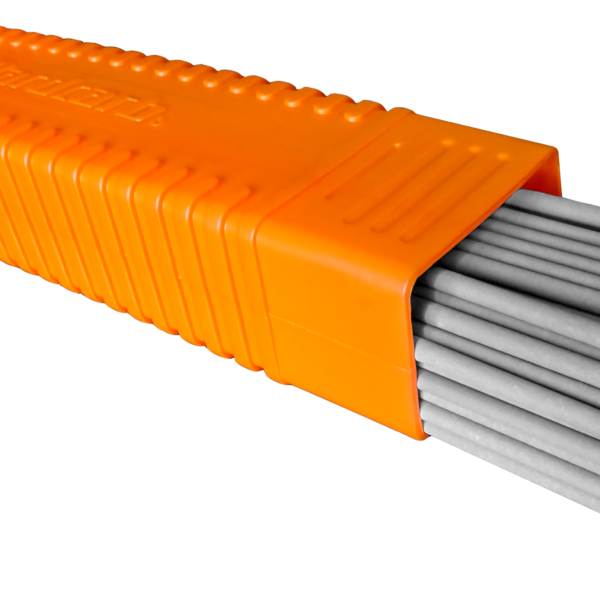Nicrolloy 201

An iron core electrode with a special flux coating for producing nickel-free non-machinable deposits. It is used for the repair welding of difficult to weld, heavily contaminated and poor quality cast iron. Commonly used as a base layer to seal contaminations or for facilitating secondary welding with pure nickel or nickel-iron electrodes. Single-pass welds are also suitable for wear resistant overlays on cast iron parts. The force of the arc facilitates penetration of surface oxides and also combats dirt, grease and rusty surfaces.
Weld deposit characteristics:
The electrode has a soft, “arc spray” type running characteristic, with good penetration and easily removable slag. The quick-freezing welds are dense, spatter-free and free from porosity. Out-of-position welding is possible.
The weld deposit is only machinable by grinding, has a good colour match with the base material and can be enamel coated.
Recommended uses and applications
» for the repair welding of difficult to weld, heavily contaminated and poor quality cast iron with and without the application of preheat.
» for the correction of castings defects and sealing layers on components with contaminated surfaces prior to joining application.
» joining cast iron to mild steel.
» for surfacing parts subjected to wear through abrasion.
Additional info
Anti-wear suitability
| Metal-to-Metal friction Metal surfaces in relative motion forced into contact with or without lubricant. Degradation by the formation of micro-welds between the contacting surfaces. | - |
| High pressure abrasion Wear by relative movement under pressure of mineral particles of suitable hardness, shape and texture to remove material from the metal surface, leaving superficial deformation. | - |
| Cavitation Tearing out of grains from the metal surface by the formation and implosion of bubbles in a liquid in rapid motion. | - |
| Mechanical fatigue Fatigue and formation of cracks in surface regions due to tribological stress cycles that result in the separation of material. | - |
| Thermal fatigue Cyclic exposure to high temperatures leading to permanent deformation by alternate expansion and contraction. Alteration of the structure and properties of the material. | - |
| Hot oxidation Creation of a poorly adhering oxide layer that reforms constantly. Degradation by loss of material thickness. | - |
Workability
| Work hardening Work hardening is the process of making a metal harder and stronger through plastic deformation. When a metal is plastically deformed, dislocations move and additional dislocations are generated. | |
| Edge retention Suitability for creating sharp edges and retaining them during operation. | |
| Machining Machinability is the ease with which a metal can be cut (machined) permitting the removal of the material with a satisfactory finish at low cost. | Not possible. Only grinding possible. |
Mechanical properties
| Yield strength | > 340 Mpa |
| Tensile strength | > 400 Mpa |
| Elongation A5 | > 20% |
| Impact strength | - |